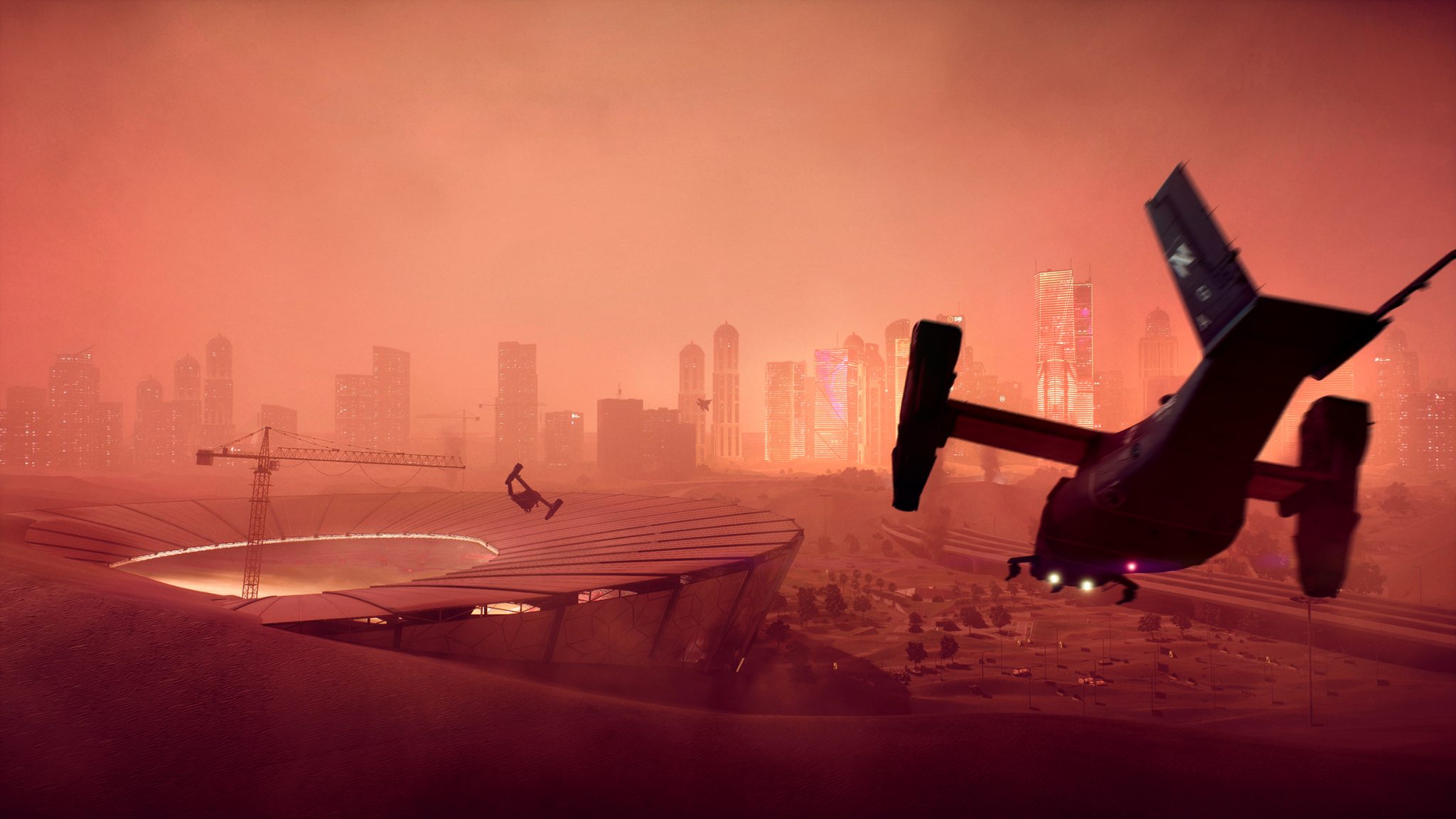The popular online multiplayer shooter Battlefield 2042 cashes in on the crises awaiting future generations while simultaneously hastening their arrival
A darkened sky and a mass of debris swirling in the wind: humvees, shrapnel, dirt, people. This image, or at least a nearly identical one, repeats throughout climate fiction, be that in Hollywood movies such as The Day After Tomorrow (2004) or environmental literature popularised by the likes of Kim Stanley Robinson. The multiplayer videogame Battlefield 2042 (2021) multiplies this increasingly common trope many times over, depicting the image not once but ad infinitum across its series of endlessly looping online warzones. In doing so, the game’s high-definition extreme weather is not so much a cataclysm as it is an increasingly hollow spectacle.
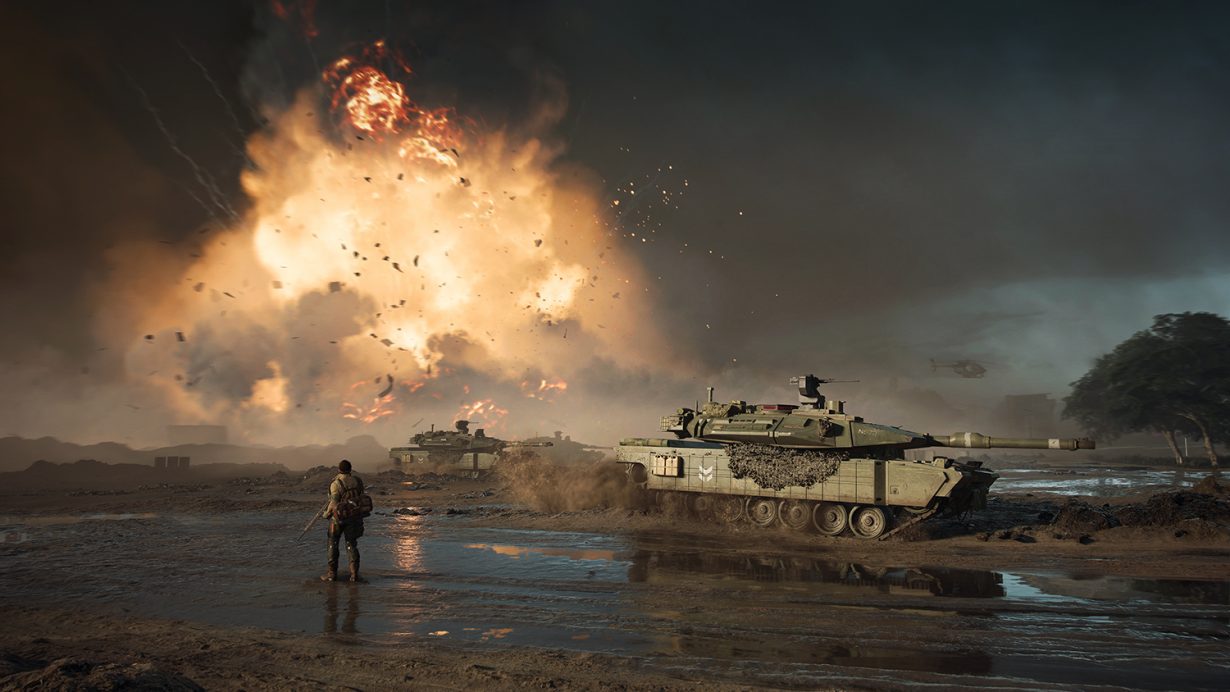
Battlefield 2042 is the latest entry in the popular online shooter series which began nearly 20 years ago with Battlefield 1942 (2002). Up to 64 players would slug it out on maps inspired by real-world battles like El Alamein. Now the number is 128 and the optics of conflict have changed, if not the game. The series’ signature combination of gigantic maps punctuated by control points (essentially flags each team must capture), remains, but its appeal resides less in this structure than the game’s style of hard-nosed military simulation meets chaotic, slapstick action. Recklessly piloted jets career above disorganized grunts who must fend off tanks that roam and swivel like a child is driving. It’s as if a war movie is being directed by Charlie Chaplin rather than Steven Spielberg – absurd in the extreme, funny even.
This juxtaposition has felt most uncomfortable when the series ventures into contemporary or near-future settings. The set-up usually involves the US, Russia, and China, a kind of Cold-War-sinophobic cocktail. But Battlefield 2042 adds an intriguing wrinkle to the paranoid formula through its climate premise. Extreme weather events and environmental disasters in the titular year have destabilised the earth’s nations causing mass displacement. Rather than embarking on a trip to safety (as many climate refugees have already been forced to), these people unite as a nationless mercenary force referred to glibly as ‘No-Pats.’ They lend their arms to the world’s two remaining superpowers, the US and Russia, engaged in proxy battles to safeguard their interests in contested climate zones.
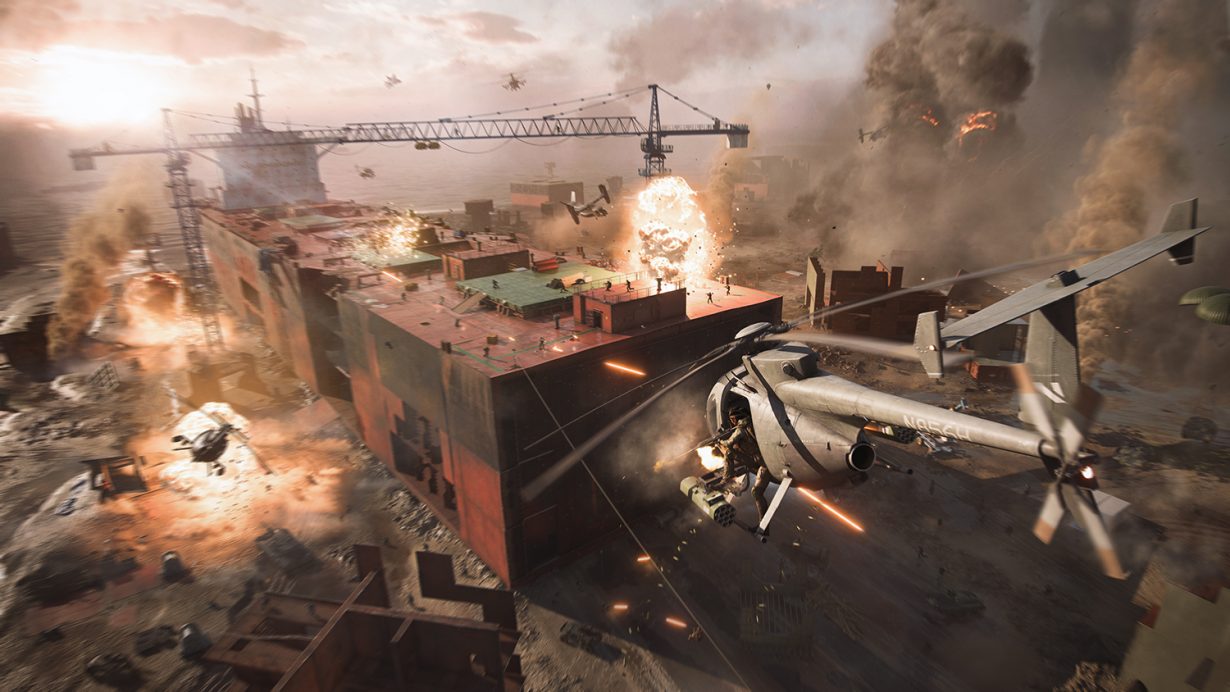
A series of genuinely striking images are wrought from this set-up. A battleground set in Egypt is divided in half by a gigantic wall. On one side, the verdant, finely irrigated land of an agricultural technology company; on the other, an arid desert – together, and with a little warfare thrown in, a landscape bent entirely out of shape. Then there are the cyclones themselves, a technical marvel of 3D rendering, particle systems, and physics. The first time you see one, your breath will be taken away. As it reappears, you might grow bored, and then perhaps, as I did, curious. Walking closer, it becomes clear there’s nothing dangerous about the maelstrom. It gathers you up and then puffs you out high above the map, allowing you to safely parachute back to earth while rattling clips from your machine gun – a virtual theme park in motion.
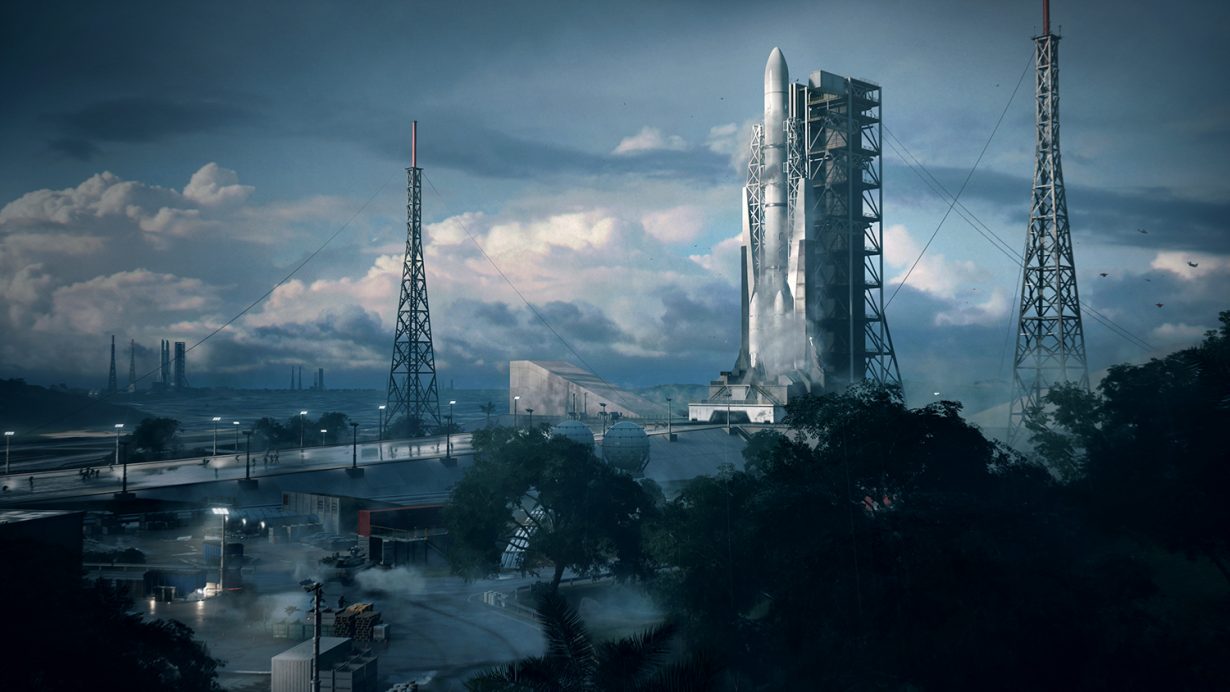
So the climate war in Battlefield 2042 is undeniably playful, but it takes place within a machine-like structure. The game could, theoretically, never end, because Battlefield 2042 starts a fresh map mere seconds after you’ve finished another. This means that there is never any pause – no quiet moment to reflect on the virtual bodies left to smoulder in the desert, or the climate crisis within which this symbolic violence takes place. Crucially, it lacks a negative image of the kind Anselm Kiefer and John Nash’s conflict-focused paintings offer. War is full of everything – pain, suffering, violence, noise – but their pictures of its aftermath are desolate and empty. Where is that feeling in Battlefield 2042?
The one place it could have existed is the space between the end of a battle and inevitable start of a new one, except, like other modern online shooters, this is reserved for progress bars that twinkle with rewards like the slot machines of Las Vegas. The impetus is clear – to jack back in for one more frag, one more cyclone. It’s in this cycle that the game’s thirst is revealed, one that seeks to not only sustain itself but the infrastructure of high-definition gaming. The game’s launch has been besieged with performance issues that manifest primarily as stuttering, low frame rates. Many PCs are struggling to render the cutting-edge visuals, which means the graphics cards and CPUs found inside them, a mass of raw materials fused together using deadly chemicals, are likely to be upgraded – the old machinery tossed into the landfill.
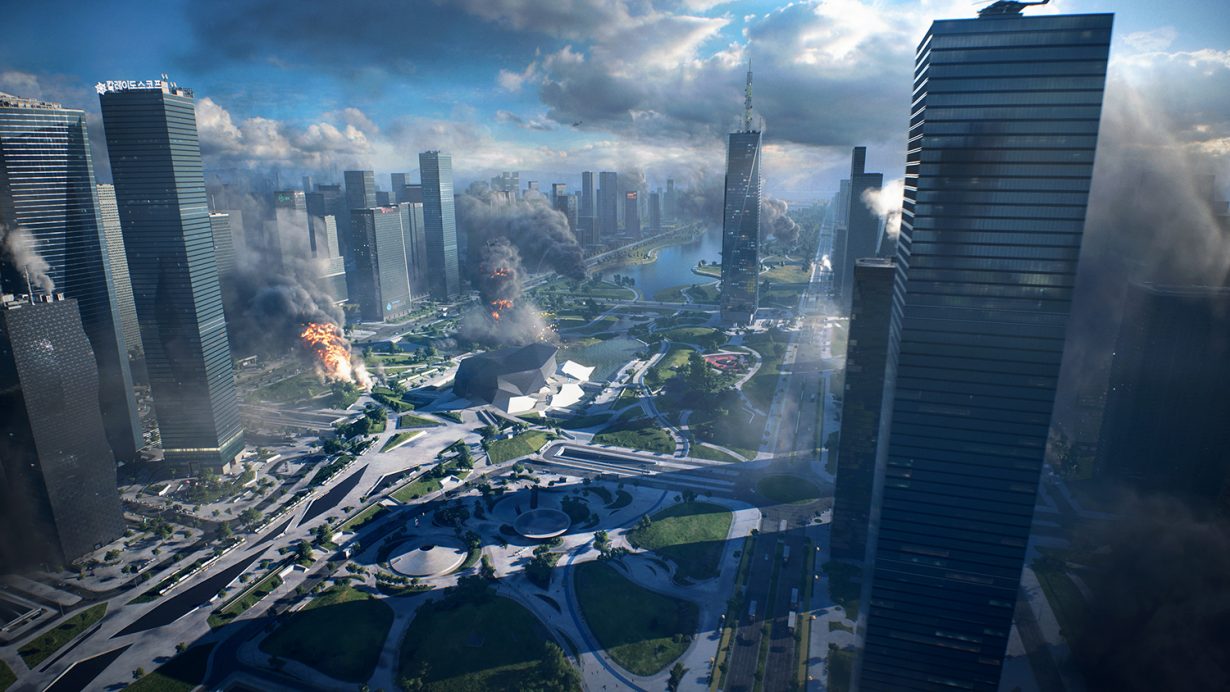
As a result, Battlefield 2042 is a game that simultaneously utilises the climate crisis as a gameplay hook while perpetuating intensive resource extraction and energy consumption (including the electricity used to actually make and play it). The kicker is that its weightless take on extreme weather, which will set computer fans whirring across the world, is so inconsequential that it ends up as nothing more than a graphical showcase. Battlefield 2042’s spectacle isn’t just hollow, it’s also deeply cynical.
